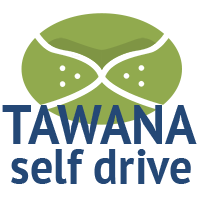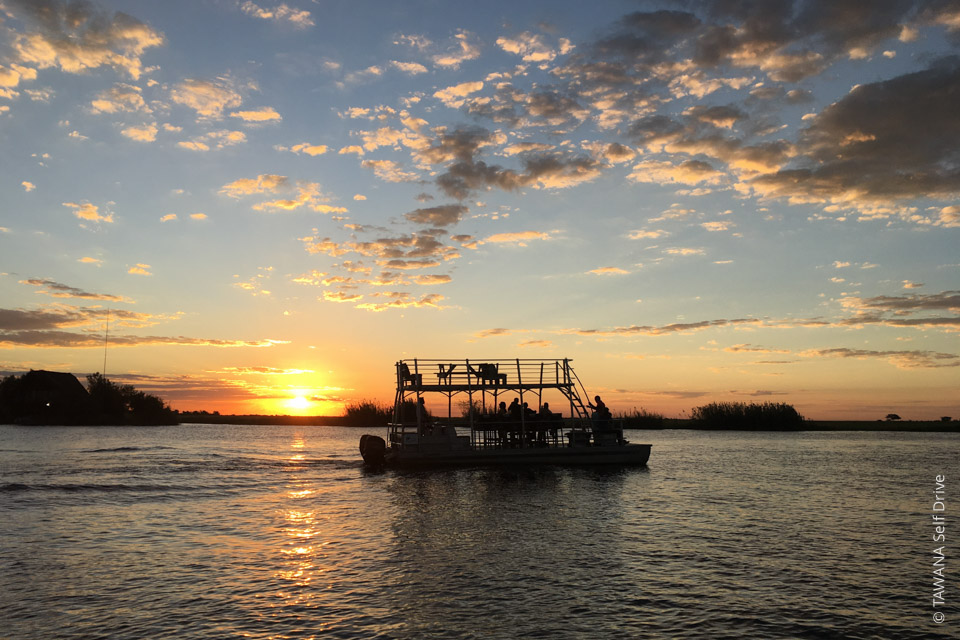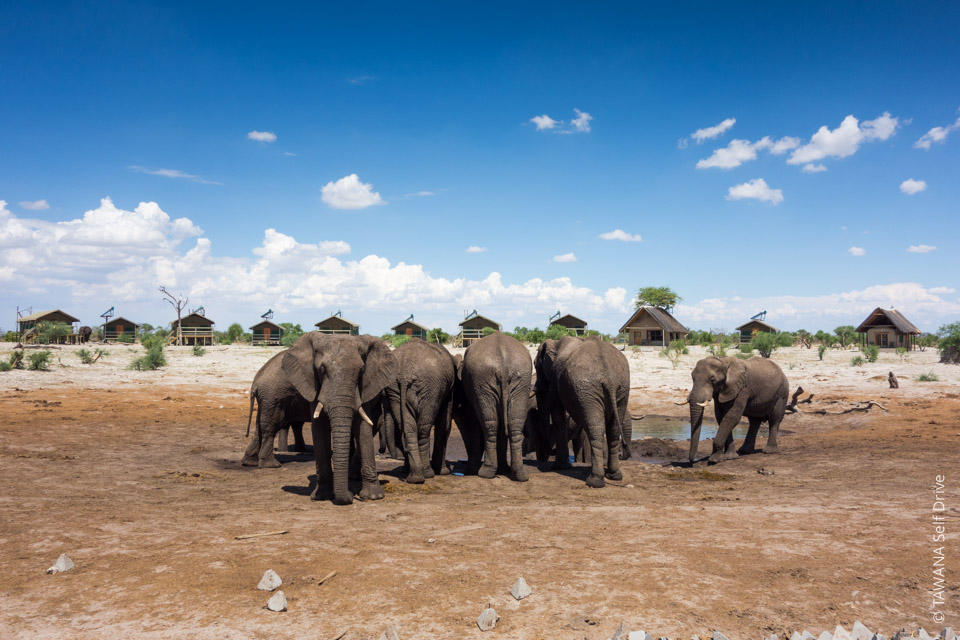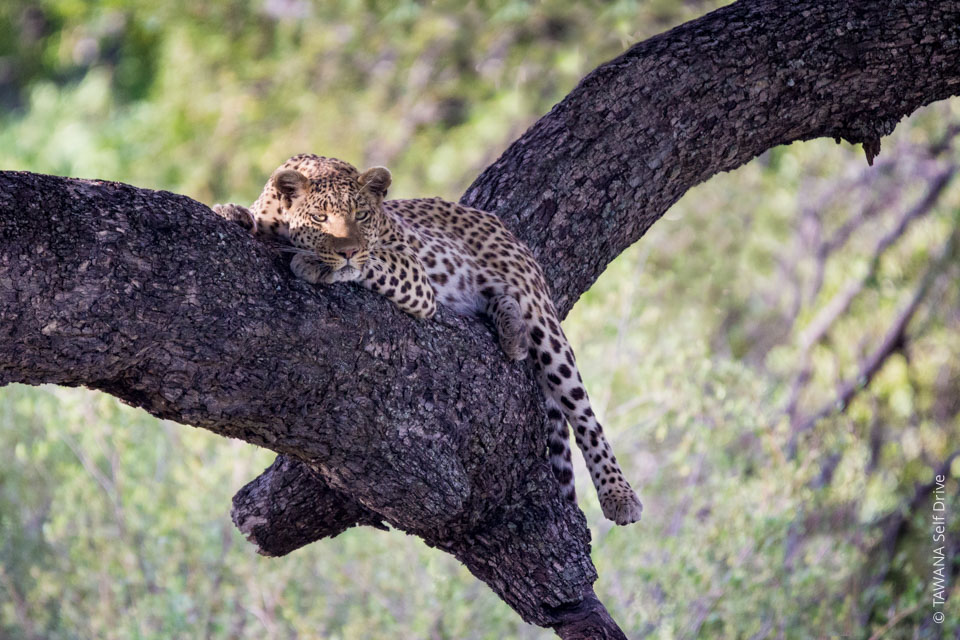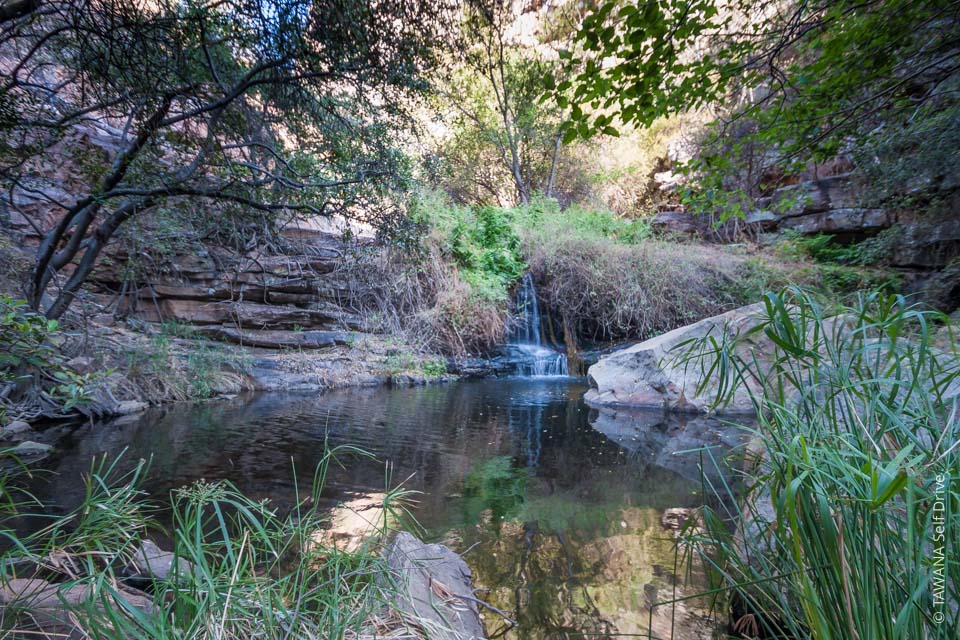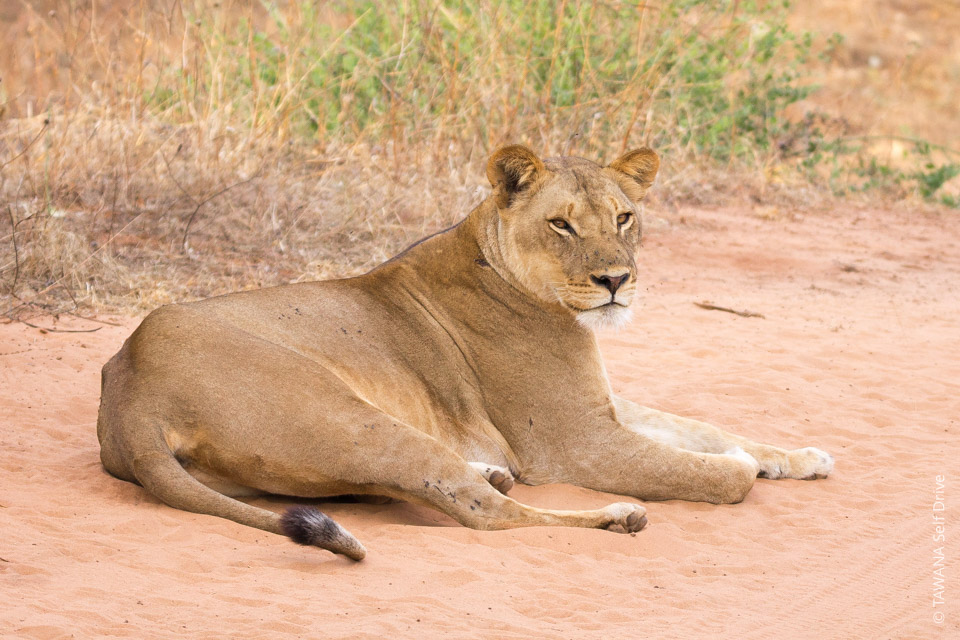
Lionness, Chobe National Park, Botswana
Self-Drive Safari Itinerary in Botswana
The Big Five route
An unforgettable self-drive safari through Botswana, land of the five biggest animals in Africa
A self-drive safari in botswana : The Big Five Route
Botswana is not a destination for experienced self-drivers only, it is also a great self-drive safari country for the first-timers, thanks to a good quality road network that easily connects the main points of interest. You maintain your independence until the entry of the most perilous reserves while initiating yourself to drive and observe animals in parks that remain accessible.
The big 5 route is particularly suitable for those wishing to travel semi-independently in a 4×4 vehicle, to discover the big five, these emblematic animals of the Africa whilst soaking up Batswana culture and practicing hiking activities.
Detailed itinerary
KASANE
The small town of Kasane has the perfect place to start a self-drive safari in Botswana. Its location is hard to beat, at the junction of 4 countries: Botswana itself, Namibia, Zambia and Zimbabwe. It is also at the entrance of Chobe National Park, one of the most beautiful in southern Africa.
Kasane is a great starting point for the water route. As well as an international airport with regular flights from Johannesburg in South Africa, the town has several supermarkets, cash machines, garages and petrol stations, which means you will have all the supplies and support you need before setting off.
Kasane is also a peaceful and delightful town, well worth relaxing in for a few days and making the most of the many activities on offer. These include the unmissable crossing over the Chobe river, which will give you an unforgettable first look at the wildlife of Botswana.
THE ELEPHANT SANDS
First step on the Big five route, the Elephant sands is located on the Kasane-Nata axis in the northeast of Botswana.
This is a cozy bush camp set up around a water hole where elephants are used to drink water peacefully.
Here, the word «giant» takes on all its meaning but not only that! A pack of wild dogs also move around, giving the opportunity for a rare encounter with one of the most endangered animals in southern Africa.
THE LEOPARDS OF THE TULI BLOCK
Tuli Block is a narrow strip of land extending 350 km along the Limpopo river, characterized by spectacular rock formations, a rich and varied fauna as well as a few natural sites creating a singular ensemble compared to other regions of Botswana.
Its most famous natural monument is the Solomon wall, 30m high, present on both side of the dry river of Motloutse.
Tuli has 48 species of mammals and more than 350 species of birds. With the elephant present in exceptional numbers, leopard is the most emblematic animal of the reserve. Although one of the most widespread felines on the African continent, the leopard is not easily spotted due to its stealthy and solitary nature. The chances of seeing it in the Tuli region are much higher than elsewhere in Botswana.
The Northern Tuli Reserve is the succession of private concessions that can be crossed by self drivers via a sand and gravel track. The most welcoming and well positioned campsite is that of Molema, born from a community tourism project and now managed by Tuli Wilderness.
To enjoy the activities in the private areas, you will need to reside in one of the lodges or tented camps of the reserve. They all offer traditional game drive, hiking, biking or horse-riding and visits to surrounding villages.
HIKING AT THE TSWAPONG HILLS
Located east of Palapye, the Tswapong hills are a mountain range rising to 400m of altitude. The rocky cliffs are porous and absorb rainwater forming permanent waterfalls and lagoons amidst lush vegetation.
The region of Palapye / Tswapong deserves to be a stop over for a few days to discover its many points of interest and take advantage of the opportunity to go hiking.
Lepokole Hill
Not far from Bobonong, north of the Tuli, rises the Lepokole hill which offers a remarkable panoramic view. Formed by a set of granite blocks, kopjes and hematite in the extension of Matobo in Zimbabwe, the Lepokole hill was the refuge of the last sans of the region. They have left several cave paintings in caves and rocks.
The site is also full of archeological treasures such as stone age tools and ancient pottery. It is currently managed by the Mapanda Conversation Trust.
Old Palapye and the Phothophotho gorge
Old Palapye (Phalatswe) was the capital of Bangwato during the reign of Khama III at the end of the 19th century. The site has preserved the remains of the «London Missionary Society» church built between 1891 and 1894 as well as a shop, prison, market and European and African graves of the time.
Not far from Old Palapye and accessible on foot, the gorge of Phothophotho presents a beautiful waterfall that comes to fill a large lagoon. Baboons and daman are frequently observed here.
Malaka gorge
Accessible from the village of the same name, the Malaka gorge allows one to reach a small waterfall emerging from the rocks. The surrounding wooded valley is an excellent location for bird watching.
Moremi Gorge
The Moremi gorge is the most spectacular in Tswapong region. Perched in the hills, it is a source of 3 permanent waterfalls whose highest is 10m, forming below a lagoon of deep clear water hidden by lush vegetation.
Moremi Gorge is a beautiful place to hike and observe many birds.
Gootau
The Gootau area is made up of cliffs sheltering a colony of cape vultures, threatened by extinction. As Gootau is a breeding site, permission must be obtained from the village chief and care must be taken not to disturb the birds during the breeding season.
THE RHINO’S OF THE KHAMA SANCTUARY
Close to the city of serowe, the Khama Rhino Sanctuary is a unique place in Botswana, allowing one to observe both white and black rhinos among other animals such as leopards, hyena, gnous, bubales, giraffe or kudu.
Originally, the sanctuary was a community project initiated by villagers in the area, when poaching had wiped the rhino population in Botswana. In 1993, the shelter welcomed its first 4 rhino’s. Since then the population has grown and there are more than 30 white rhinos and 4 black rhinos.
The two species are well protected and under guard, thanks to the presence of a nearby military base.
It is permitted to move freely within the reserve. The sand tracks can be a bit deep in some places, but the visit is feasible with a light 4×4. It is possible to be accompanied by a guide. The sanctuary also organizes game drives by day and night, as well as rhino tracking.
RETURN TRIP TO KASANE VIA FRANCISTOWN
Francistown is one of the oldest, most charming and dynamic cities in Botswana.
It was born in the late 19th century when European gold seekers discovered gold deposits at Tatitown, then at the recently reopened monarch mine. It was here that Francistown began to develop around a single street bordered by shops that followed the route of the railway line built by British contractor Cecil Rhodes.
Francistown has never stopped expanding and modernizing whilst remaining friendly and peaceful. Today it is a comfortable and historically interesting city. Old colonial buildings remain visible in the city center, the Supa Ngwao museum also plays the role of an information center which presents the history and culture of the Kalanga’s and many crafts can be bought at the Craft Museum Shop.
Not far from the city, the Tachila Nature Reserve, the Kalanga name meaning “rejoice for what is a saviour for all”, promotes wildlife to visitors and above all raises awareness among school children about the conversation of natural resources.
THE BUFFALOS AND LIONS OF THE CHOBE RIVER FRONT
Back in Kasane, it’s the moment/time to discover the Chobe river front that offers the opportunity to see 4 of the greatest mammals, especially the buffaloes and lions that allow the successful completion of the «Big five» self-drive safari in Botswana.
Whether by boat or 4×4, the discovery of the banks of the Chobe will always be a real delight. It is here that the animals converge in the dry season where observation of the elephants and buffaloes, closely followed by many predators, becomes quite exceptional. The banks of the river are also a must for bird lovers and the sunsets are always unforgettable.
It is not uncommon to see huge herds of buffaloes at the edge of the river and their movements causing large clouds of dust which is sometimes visible from afar. Where the buffaloes are, often lions are found too. The Chobe counts nearly 200 individuals especially in the Serondela area where they are frequently observed.
OKAVANGO DELTA
The Okavango delta is one of the most beautiful wildlife sanctuaries in Africa. It consists of floodplains and network of canals. Its very authentic ecosystem is one of the richest and varied on the African continent. Birds abound there and most mammals in Africa can be found.
Apart from the Moremi reserve, the delta is divided into exclusive private concessions, inaccessible by car and therefore prohibited to self drivers. It’s time to end your self-drive safari in Botswana and to be pampered in a luxury lodge!
The city of Maun is the gateway to the delta, and it is only one-hour flight from Kasane. From here the concessions can be reached by small aircraft that offers the advantage of seeing meanders of the delta as well as its biggest inhabitants. The end of the strip will probably require sailing on a traditional mokoro along the canals, before reaching the lodge you have chosen.
Spending a few days in the lodges of the Okavango delta remains an expensive privilege but the delta is a magical, totally preserved place of stunning natural beauty, away from the mass tourism and close to incredibly free wildlife. It will probably be the highlight of the journey!
VICTORIA FALLS
How else to finish your journey along the waters other than by the banks of the mythical Zambeze and by visiting the spectacular Victoria Falls! Forming the largest waterfall in the world, the Falls are in a part of the river 1.7km wide where the water plunges earthward from a height of close to 100m. The flow is greatly increased following the rainy season.
The clouds of water mist arising from it can be seen from more than 30km away. Forming a natural border between Zambia and Zimbabwe, they are most impressive on the Zimbabwean side but may also be visited from both countries.
Some reasons to choose this route
A semi-independent circuit allowing to maintain its autonomy in easy traffic conditions, to discover 4×4 driving on some more rough tracks, and enjoy guided activities for deeper immersion in nature.
The best chance to succeed in encoutering the Big Five!
A departure from Kasane for a route focus on the eastern half of the country with two possible extensions, one towards the Victoria Falls in Zimbabwe the other towards the private concessions of the mythical Okavango Delta.
